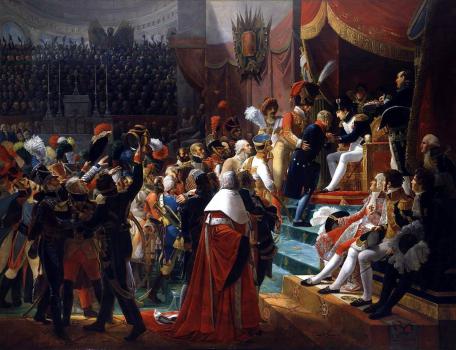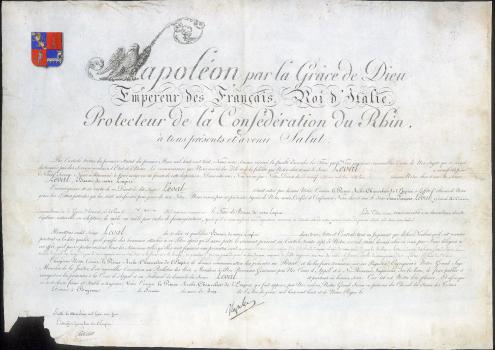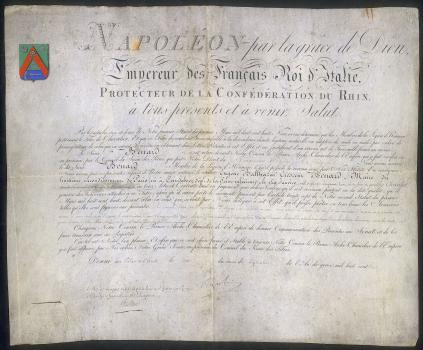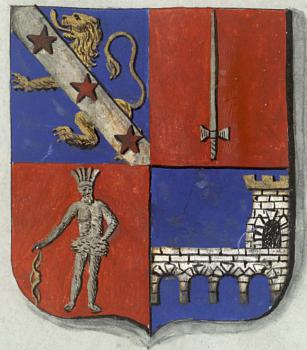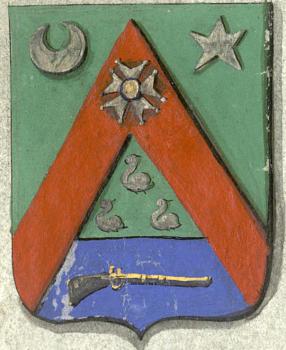To Be Napoleon Each Wishes
Napoleon and the "New Nobility"
The first step to creating the imperial nobility was taken in 1804, when Napoleon I granted the titles of Prince to members of the imperial family. Napoleon's decree of March 1, 1808 almost completely restored the previous system of titles (dukes, counts, barons, chevaliers) and noble coats of arms. The new nobility was granted as a reward. The newly formed elite was called upon to assert the legitimacy of the existing authority and reliably protect the throne. The Legion of Honor, established by Bonaparte in 1802, served the same purpose. It was the first privileged organization of the best of the best, and, from 1804, also a sign of the highest distinction in recognition of services to the Empire.For the most part, the titles (about 68%) were granted for military valor, but nobility was also conferred for civil service. In total, from 1808 to 1814, 388 people received the title of Count, 1090 persons were given the title of Baron, and 1600 individuals – Chevalier. .
The collection of the Manuscripts Department of the National Library of Russia contains two documents dated 1808, granting noble status to both military and civilians.A Letter Patent conferring the title of the Imperial Baron on the Divisional General, Commander of the Order of the Legion of Honor, Jean-Francois Leval (1762–1834), was issued in Bayonne on June 1 , 1808, three months after the decree of March 1, 1808, reconstituting the nobility. Leval began his military career joining the infantry regiment of Poitiers in 1779 as soldier. Twenty years later, in 1799, he was promoted to Division General. Leval took part in the battles of Fërus (1794), Jena (1806), Preussish-Eylau (1807), in the Pyrenean wars. The document identifies that the hereditary title was granted to him for "selflessness and loyalty" shown during his service of the state and the Emperor.
The second Letter Patent conferring the title of of Chevalier de Mussignère on Eugene Balthasar Benard (1758–1833), Chevalier of the Legion of Honor, Mayor of the 8th Arrondissement of Paris. The document is dated, "Saint Cloud, September 10, 1808."
Both parchment Letters are written in the name of "Napoleon, by the Grace of God, Emperor of the French, King of Italy, Protector of the Confederation of the Rhine" and bear his signature–autograph. The documents were sealed (seals are now lost) by Archchancellor Cambacérès and authenticated by his signature. On the back of the Letters there are records of their registration by the Council of Seals and Titles and entry into the registers of the Senate. A granted title was accompanied by establishing a coat of arms, which each document describes in detail and reproduces in paint.
In Napoleon's heraldry, there existed more strict hierarchy than in the traditional one. There was strict criteria for making coat of arms. Decorations helped to identify the official duties and positions of its owner. So, in the top left qurter of the heraldic shields of military barons there was a silver sword on a red field. The coats of arms of the chevalier or knights of the Empire, as a rule, included a silver cross of the Legion of Honor placed on a red field. These elements can be seen in the coats of arms assigned to J.-F. Leval and E.-B. Benard.

